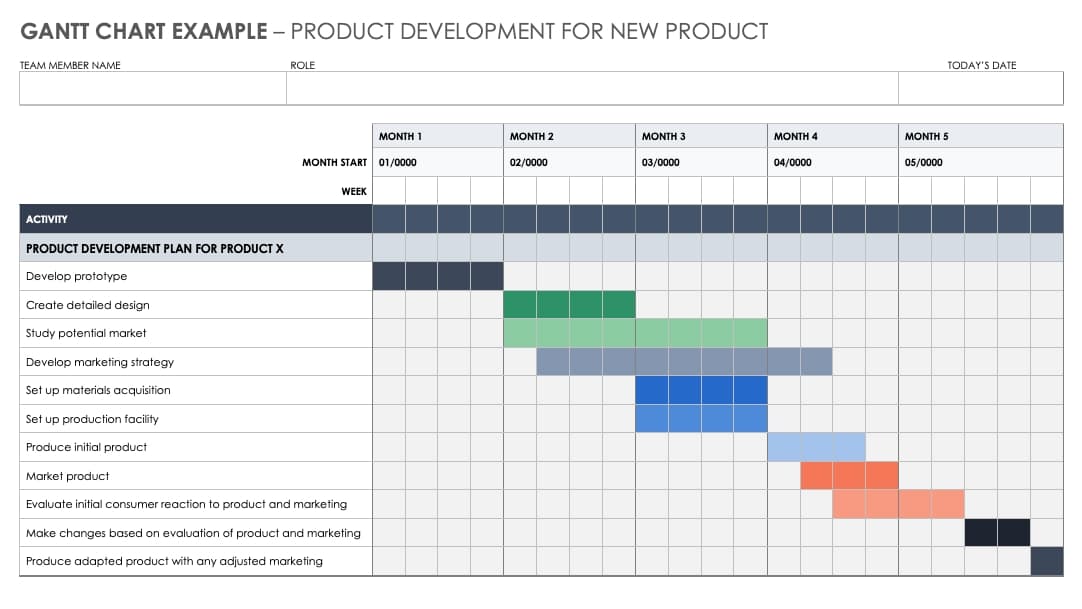In the digital age, online trading has become the cornerstone of financial markets, offering individuals the ability to engage with global economies from the comfort of their homes. This platform has democratized access to stock exchanges, commodities, and cryptocurrencies, allowing traders to execute transactions in real-time with just a few clicks. However, the convenience and accessibility come with their own set of challenges and complexities. Navigating these requires not only a keen understanding of the markets but also the ability to leverage the right tools and resources effectively. This is where the significance of a comprehensive trading platform becomes evident, providing a gateway to a suite of analytical tools and insights that are indispensable for making informed decisions.
The process of login Exness trading platform exemplifies this gateway, offering traders immediate access to a world where information and functionality converge to create a powerful trading environment. Once logged in, users are presented with an array of analytical tools that enable them to dissect market trends, analyze price movements, and anticipate market shifts with a higher degree of accuracy. This access is pivotal for traders aiming to stay ahead in the fast-paced world of online trading, where every second and every decision can have significant implications. The Exness trading platform, with its intuitive design and comprehensive features, serves as a critical ally in the quest for trading success, encapsulating the essence of what it means to navigate the complexities of the financial markets in the digital era.
Strategy 1: Develop a Trading Plan
Setting Clear Goals and Objectives
Before diving into the depths of online trading, it’s crucial to anchor yourself with clear goals and objectives. Are you trading for long-term wealth accumulation, or are you looking for quick, short-term gains? Setting your sights on specific financial targets and time frames can guide your trading decisions, helping to align your activities with your overall financial strategy.
- Short-term goals: Might include daily or weekly income targets.
- Long-term goals: Could focus on portfolio growth over years.
Risk Management Techniques
Risk management is the safety net of your trading strategy. It involves identifying potential losses in trading and implementing measures to mitigate them. Key techniques include:
- Setting stop-loss orders: Automatically selling a security when it reaches a certain price to prevent further loss.
- Position sizing: Determining how much of your portfolio to allocate to a single trade based on your risk tolerance.
Incorporating these techniques can help preserve your capital and ensure longevity in the trading world.
Tools for Planning and Analysis
Leverage technology to your advantage by using tools designed for market analysis and trade planning. Platforms like MetaTrader, TradingView, and others offer advanced charting capabilities, real-time data, and technical indicators to inform your trading decisions. Furthermore, utilizing trade simulators or paper trading accounts can allow you to test strategies without financial risk.
- Charting software: Helps visualize market trends and patterns.
- Economic calendars: Keep you informed about major economic announcements that could impact the markets.
Strategy 2: Stay Informed About the Markets
Importance of Market Research
Knowledge is power, especially in online trading. Staying informed about the markets enables you to make educated decisions, anticipate market movements, and react swiftly to opportunities or threats. Understanding the economic, political, and social factors that can influence market trends is essential for staying one step ahead.
Sources for Market News and Updates
Diversify your sources of information to gain a comprehensive view of the markets. Utilize financial news websites, trading forums, and social media platforms to stay updated on current events and expert analyses. Subscriptions to financial newsletters or podcasts can also provide valuable insights into market dynamics.
- Financial news websites: Bloomberg, CNBC, Financial Times.
- Social media: Twitter feeds of financial analysts and traders.
Analyzing Market Trends and Indicators
Learn to interpret market trends and indicators to forecast potential price movements. Technical analysis, using historical price data and volume, can reveal patterns that suggest future activity. Similarly, fundamental analysis, examining company earnings, economic indicators, and industry trends, can provide a basis for investment decisions.
- Technical indicators: Moving averages, RSI (Relative Strength Index), MACD (Moving Average Convergence Divergence).
- Fundamental indicators: GDP growth rates, unemployment rates, corporate earnings reports.
Strategy 3: Use Technology to Your Advantage
Leveraging Trading Platforms and Tools
In an era where technology is king, not leveraging cutting-edge trading platforms and tools is like sailing without a compass. These platforms offer more than just access to buy or sell orders; they provide a suite of analytical tools, real-time data, and customizable interfaces to suit your trading style. From advanced charting software to economic indicators and automated trading systems, these tools can significantly enhance your decision-making process and execution speed.
- Advanced charting tools: Enable detailed market analysis to identify trading opportunities.
- Real-time data feeds: Offer instant market updates, crucial for day trading strategies.
Automated Trading and Robots
The realm of automated trading and robots might seem like science fiction, but it has become a reality in today’s trading world. These systems can execute trades based on predefined criteria, removing emotional bias and improving execution speed. While they offer significant advantages, it’s essential to understand their mechanics and risks. Testing on demo accounts before deploying on live markets can help mitigate potential downsides.
- Algorithmic trading: Uses complex algorithms to execute trades at the best possible prices.
- Trading robots: Automate the trading process based on technical indicators and strategies.
Mobile Trading Applications
The convenience of mobile trading applications cannot be overstated. They allow traders to manage their portfolios, execute trades, and stay informed about market changes from anywhere in the world. This mobility ensures that you never miss an opportunity, even when away from your primary trading setup.
- Accessibility: Trade anytime, anywhere, with just a few taps on your device.
- Notifications: Real-time alerts and notifications about market movements and trade executions.
Strategy 4: Practice Money Management
Understanding Leverage and Margin
Leverage and margin are double-edged swords in online trading. While they can amplify profits, they also increase the potential for significant losses. Understanding how to use leverage wisely and managing margin requirements is vital to safeguard your capital. Always consider the risks associated with borrowing funds for trading and use stop-loss orders to protect your positions.
- Leverage: Allows you to trade larger positions with a smaller amount of capital.
- Margin requirements: The minimum amount of capital required to hold a leveraged position.
Balancing Risk and Reward
Every trade involves a balance between risk and reward. Establishing a risk-reward ratio that aligns with your trading strategy and risk tolerance is crucial. This balance helps in making informed decisions about which trades to enter and when to exit, ensuring that potential rewards justify the risks involved.
- Risk-reward ratio: A guideline to assess the potential profit of a trade relative to its risk.
Diversification Strategies
Diversification is a core principle of risk management, spreading your investment across various assets to reduce exposure to any single risk. It’s not just about investing in different stocks but exploring different asset classes, including bonds, commodities, and cryptocurrencies. Diversification can help smooth out your portfolio’s performance over time, mitigating the impact of market volatility.
- Asset allocation: Spread investments across various asset classes.
- Sector diversification: Invest in different industry sectors to reduce sector-specific risks.
Strategy 5: Review and Adjust Your Strategy Regularly
Importance of Continuous Learning
The financial markets are ever-evolving, influenced by economic changes, political events, and technological advancements. Staying successful in online trading requires a commitment to continuous learning. Keeping abreast of new trading strategies, financial instruments, and market trends is essential. Engage with trading communities, attend webinars, and read extensively to broaden your knowledge base.
- Educational resources: Books, courses, and seminars on trading.
- Trading communities: Forums and social media groups where traders share insights and experiences.
Keeping a Trading Journal
A trading journal is an invaluable tool for any trader. It allows you to record your trades, including the strategy used, entry and exit points, emotional state, and the trade’s outcome. Reviewing your journal regularly can provide insights into your trading habits, helping you identify what works and what doesn’t, and guide you in fine-tuning your strategies.
- Record-keeping: Detailed logs of each trade and its outcome.
- Review process: Analyze successes and failures to improve future strategies.
Adapting to Market Changes
Markets are dynamic, and strategies that worked yesterday may not work tomorrow. The ability to adapt to market changes is a hallmark of a successful trader. This means being flexible in your approach, willing to discard what’s not working, and agile enough to adopt new strategies as conditions change.
- Market analysis: Regularly analyze market conditions and adapt strategies accordingly.
- Flexibility: Be willing to adjust or abandon strategies that are no longer effective.

Psychological Aspects of Online Trading
The psychological landscape of online trading is fraught with emotional highs and lows. The key to managing emotions and stress lies in developing a resilient mindset and employing strategies to stay level-headed. Meditation, exercise, and setting strict trading hours can help maintain emotional equilibrium. Recognizing the signs of stress and taking proactive steps to address them ensures that decisions are made rationally, not emotionally.
- Mindfulness: Practice mindfulness to stay present and focused.
- Emotional regulation: Develop strategies to manage fear, greed, and frustration.
Discipline and patience are the bedrock of successful trading. These virtues allow traders to stick to their trading plans and wait for the right opportunities, rather than acting on impulse. Establishing and adhering to a set of trading rules can foster discipline, while patience ensures that traders do not rush into poor decisions or exit winning trades too early.
- Adherence to strategy: Stick to your trading plan even in volatile markets.
- Long-term perspective: Maintain patience for achieving long-term trading goals.
Common Pitfalls to Avoid
Overtrading occurs when traders take excessive trades out of excitement or to recoup losses, often leading to diminished returns and increased transaction costs. Conversely, undertrading, driven by fear or indecision, can result in missed opportunities. Balancing trade activity by adhering to a well-thought-out trading plan is crucial to avoid these pitfalls.
- Trade selection: Be selective about trading opportunities based on your criteria.
- Emotional control: Avoid letting emotions dictate trading frequency.
One of the most critical risk management tools, stop-loss orders, protect traders from significant losses by automatically closing out positions at a predetermined price. Neglecting to set stop-loss orders can lead to unchecked losses, particularly in fast-moving markets. Always incorporate stop-loss settings as part of your trade setup.
- Risk management: Use stop-loss orders to limit potential losses.
- Strategic placement: Set stop-loss orders based on technical analysis and risk tolerance.
The herd mentality can be a dangerous pitfall in trading. Following the crowd without doing your own research can lead to entering positions at unfavorable prices and taking on unnecessary risks. Independent analysis and critical thinking are essential to identify true opportunities that align with your trading strategy.
- Independent decision-making: Conduct your own market analysis before trading.
- Critical evaluation: Question popular opinion and look for evidence to support trading decisions.
Conclusion
The journey of online trading is complex and multifaceted, blending strategy, psychology, and discipline. By understanding and implementing effective management strategies, traders can navigate the markets more successfully. Recognizing the psychological challenges and common pitfalls, and learning from the experiences of successful traders, are crucial steps toward achieving trading proficiency. Remember, the essence of trading lies not in the pursuit of perfection but in the constant striving for excellence and adaptability in the face of ever-changing market dynamics.








